
Welcome back to Flexibility Is Freedom!
Last month, I published my 3-Year Review - a summary of my results, strategy, and journey - to commemorate the 3rd anniversary of quitting my job to pursue Flexibility & Freedom.
As I head into my 4th year as a passive income entrepreneur, I thought it'd be only fitting to give this website a fresh coat of paint - it's been redesigned using Oxygen with new brand assets, featured images, and an updated homepage and about page that explains my story and purpose.
P.S. if you have any comments about the new design, I'd love to hear from you!
July 2021, the first month of my 4th year, was an excellent one on all fronts - my website recovered the traffic it lost from the December 2020 Core Update, my productivity reached an all-time high, and I made significant strides in my personal life as well.
Now, let's take a look at the business results.
Revenue improved by ~20% MoM while Revenue per Thousand Sessions (RPM) dropped back to a more normal level of $80 after last month's unusual high of $194.
Sessions, however, nearly tripled from 3,636 in June 2021 to 10,832 in July 2021 (+198%).
While I'd love to take full credit for this traffic growth, I must admit that it was fueled by Google's most recent algorithm update: the July 2021 Core Update which rolled out around July 1, 2021.
Even so, it's a much-needed motivation boost that validates my content optimization efforts!
July 2021 is now 1 of 10 months to cross 10K sessions per month.
For perspective, here's a look at the historical data (major Google Updates highlighted in red):
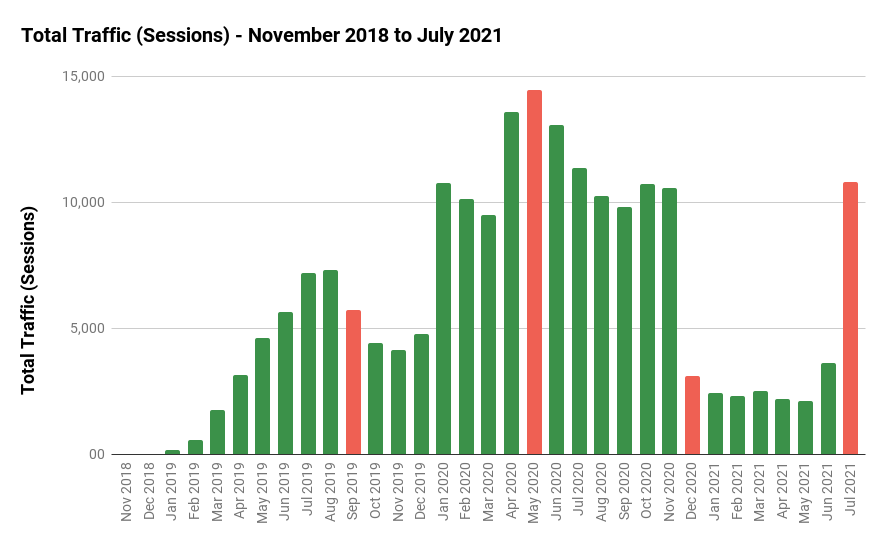
As you can see, I've more-or-less returned to the same level of traffic before December 2020, although revenue and RPM are lower, most likely due to the holiday season and traffic shift.
Finally, Amazon risk did creep up a bit from 25% to 44% as more of my Amazon-centered affiliate content started to rank and generate traffic.
Overall, I'd like to keep Amazon risk below 40%, although I've come to appreciate Amazon's consistent conversion rates and profitability (EPC) compared to alternative merchants which, in my experience, see much more fluctuations in sales from month-to-month.
My EPC with Amazon Associates US has been a consistent $10-$12 since the April 2020 rate cut, and when you factor in the additional earnings from Amazon's international affiliate programs (which have historically been 10-20% of total earnings), it's actually not bad. Did I just say that? 😮
I've finally taken the initial steps to hire my first content writers!
There were many moments at which I was about to take this step but was interrupted by unforeseen events (e.g. December 2020 Core Update).
Earlier this year, I actually found professional estheticians via Reddit forums who were willing to write for me, however, I ultimately decided not to hire them as my business was not generating sufficient cash flow to finance the content (and I needed to fix other issues with the website).
Fast forward 6 months and I'm now 100% committed.
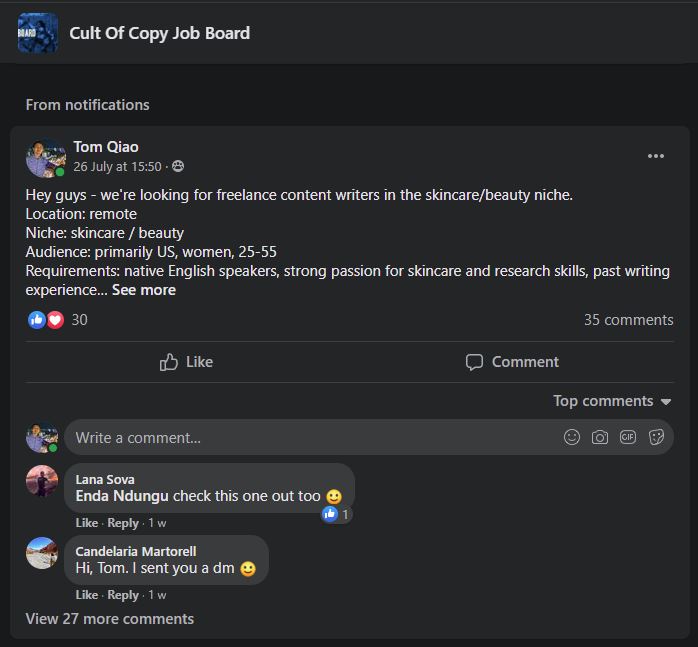
Here's what my hiring process looks like:
By the end of August, I expect to onboard my content writers and provide them with the necessary training materials (guidelines and templates) to start producing content in September. 👍
As traffic rebounded following the July 2021 Core Update, I re-explored my display ad options, which I disabled after the December 2020 Core Update due to low earnings potential.
I spent about a week and a half using Ezoic - an ad platform that optimizes ad performance across multiple ad networks - and working with an account manager to setup my website.

While I've heard good things about Ezoic on Facebook groups, the actual integration requires using Ezoic's CDN (via Cloudflare) and LEAP (it's similar to an optimization plugin).
Unfortunately, this led to a massive decrease in load times and speed optimization scores at GTMetrix and PageSpeed Insights due to Ezoic's equally massive number of JS requests.
(all ad networks, including Google Adsense and Media.net, will "slow down" your website, but I found that Ezoic was particularly troublesome)
And because Ezoic requires CDN integration rather than the traditional method of adding ad tags, I couldn't delay the JS requests with WP Rocket either to improve user experience.
After many attempts to optimize Ezoic's settings, including using their Wordpress plugin, I decided it wasn't worth the performance hit, especially given Google's introduction of Core Web Vitals as a potential ranking factor in the future.
Currently, the only benchmark that my website does not pass is the Largest Contentful Paint (LCP) requirement of under 2.5s, which I'm working to address via design and image optimizations.
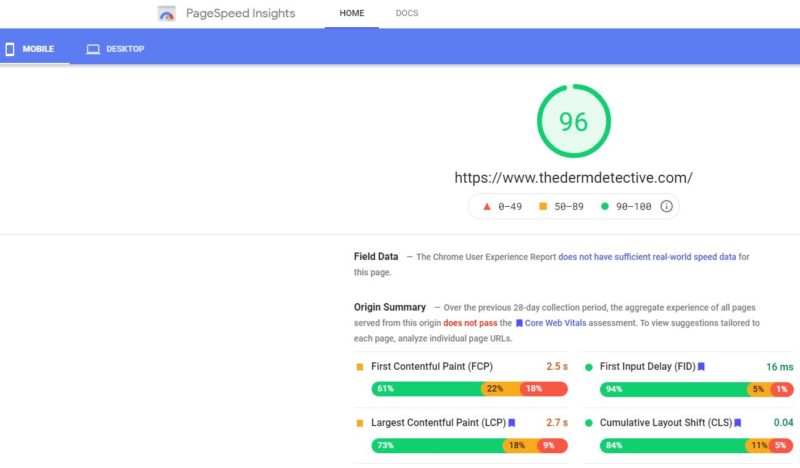
As of today, I am testing the performance of Media.net on a revenue per thousand impressions basis, after which I'll test the performance of Adsense to compare the two ad networks.
In terms of plugins, I started out using Advanced Ads but later switched over to Ad Inserter for a simpler 1-page dashboard to add ad tags that's still sophisticated enough to insert ads dynamically based on HTML elements (e.g. H2, paragraph, div, sidebar, etc.).
After publishing my 3-Year Review, I spent a lot of time organizing and optimizing my "toolkit", including a full clean-up of my Google Drive folders, deep dive into my most important SEO tools, updating my Wordpress plugin settings, and consolidating my hosting plan at Cloudways.
I purchased a lifetime licence for Authoritas, a sort of mini-Ahrefs, that includes keyword research, (limited) competitor research, rank tracking, and a pretty good backlink database. Not bad for $179 compared to $99/mo for Ahrefs.
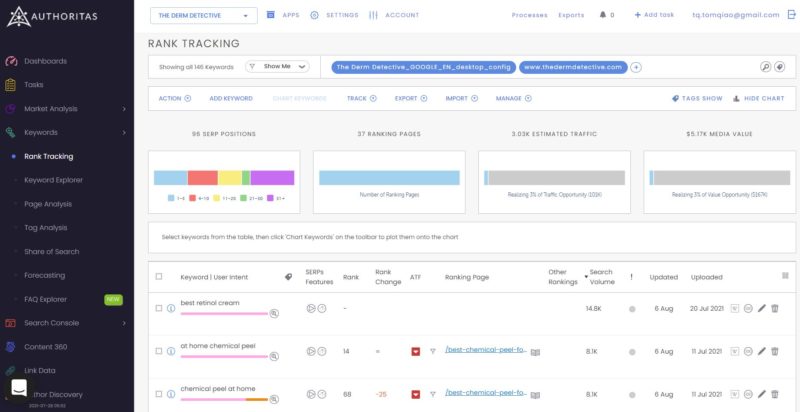
In addition, I figured out a few "tricks" with Ahrefs' free account (Ahrefs Webmaster Tools) that provides some of the paid features for free:
I spent a week going through all the documentation and webinars of my on-page SEO tools, including Frase, MarketMuse, and Surfer SEO.
This was an important step because I'm relying on the output of these tools for content creation and content optimization, and need to understand the nuts & bolts of how they work.
For Surfer SEO, I obtained additional NLP credits via their NLP giveaway tasks and purchased an annual subscription for $590/year (+2 months free).
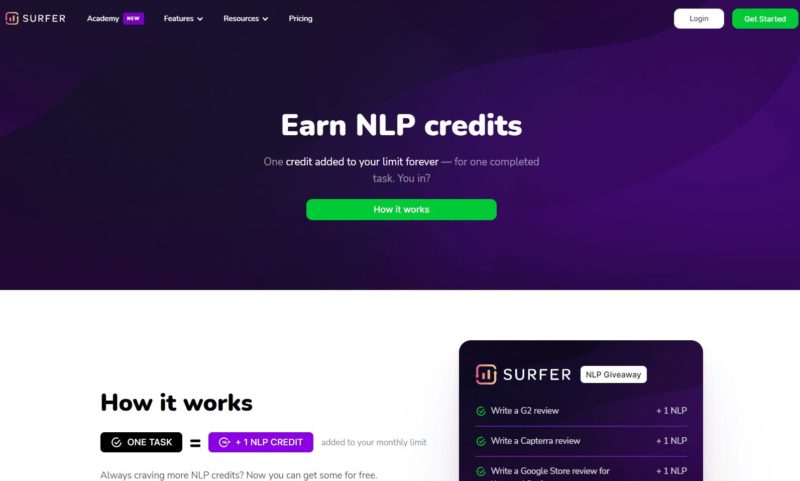
I've unintentionally accumulated 4 different rank tracking tools from my AppSumo purchases:
To simplify my process and avoid duplication, I've consolidated my keywords into Authoritas and AccuRanker (top 100 only) with SERPWatch serving as an email alert tool.
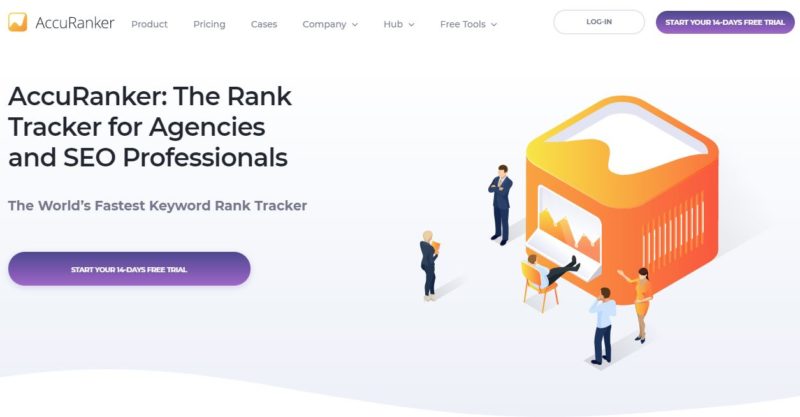
On the conversion rate optimization front:
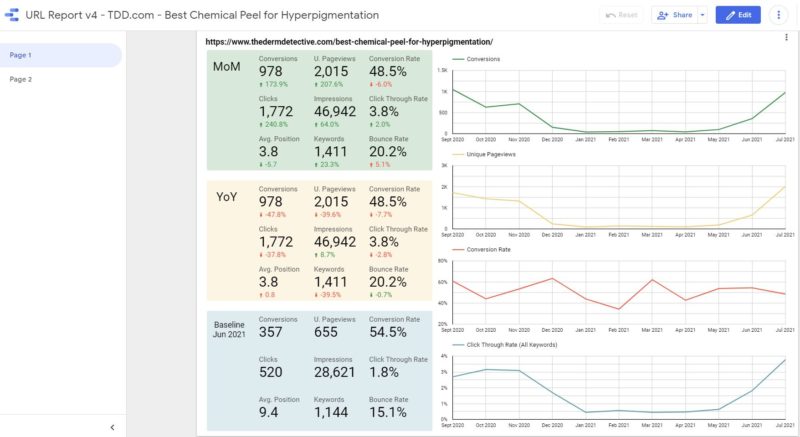
As I briefly mentioned in the Displays Ads section, I've taken steps to improve site speed in response to Google's new Core Web Vitals benchmarks:
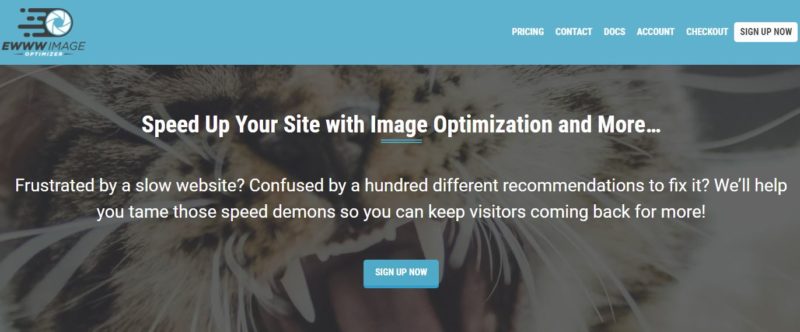
Finally, I added HTTP security headers to improve site security, including:
I also considered implementing a Content-Security-Policy but it required way too much work.
In response to the Core Web Vitals (namely, LCP) problem, I updated my design as well - replacing the original featured images (1500x1000) with smaller ones (800x600) to reduce image file size.
In addition, I've simplified the post layout - taking some inspiration from my competitors - to create a cleaner and faster page experience (let's hope Google agrees!).
Desktop:
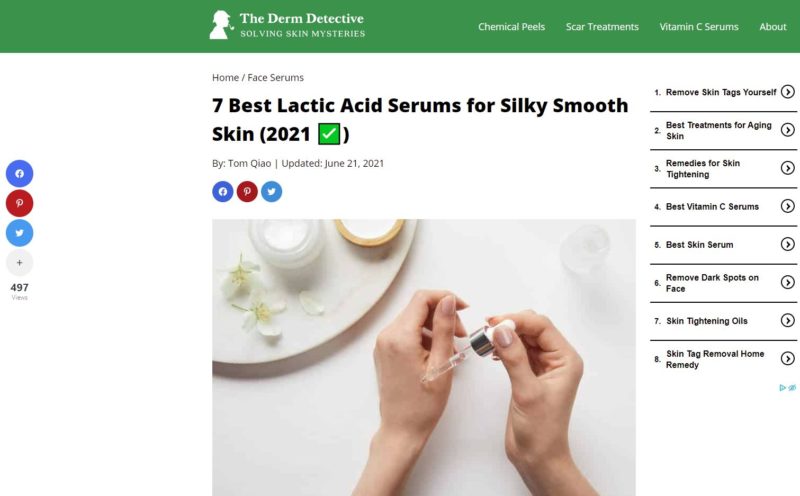
Mobile:
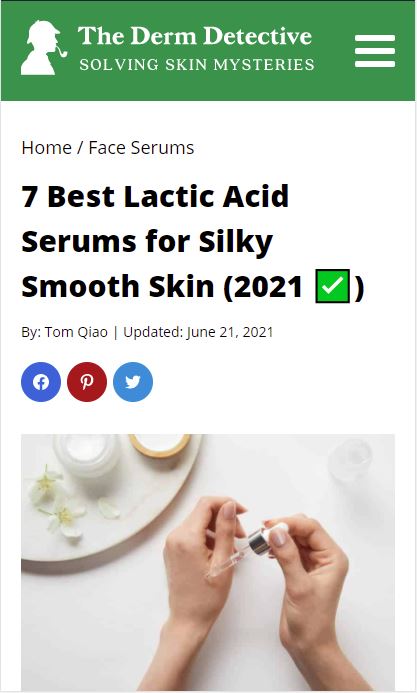
Finally, the content. Unsurprisingly, I didn't have much time to create net new content in July 2021, as I was preoccupied with the aforementioned modules.
However, I've started creating content briefs using a mix of Surfer SEO, MarketMuse, and Frase, which I plan to use myself and with my writers to produce SEO and user-optimized content.
Finally, I've thoroughly updated my keyword research spreadsheet - mapping out new and existing content silos, complete with estimated and actual search volume, competition (I use allintitle), current rankings, and historical content performance.
Overall, July 2021 was a great start to my 4th year. I'm motivated by the latest results and I think I have a good chance of breaking $1K revenue again in August 2021 (fingers crossed!).
My goal for 2021 remains $2-3K per month and with the addition of freelance content writers, each producing 4-5 articles (8-10 total) a month, I'm confident this goal is within my reach.
I'll most likely be adding a virtual assistant as well to speed up my product research process, along other tasks, so that I can focus on more strategic priorities such as keyword research, content silos, optimizing monetization, technology & design, and starting new websites.
To Flexibility and Freedom,
Tom